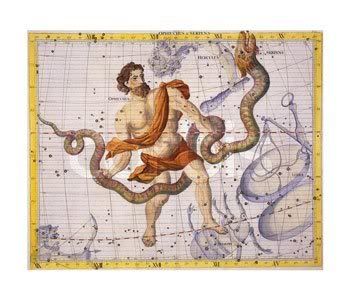Curators choose their favourite object: the Gundestrup cauldron
The British Museum
In Curator Julia Farley’s own words, ‘admitting you have a favourite object is kind of like admitting you have a favourite child’. Nevertheless, she tells us why she loves the Gundestrup cauldron and why it’s so exciting to have this remarkable object from Denmark on display in the UK for the first time.
You can find out more about the Gundestrup cauldron in Julia’s blog post:
https://blog.britishmuseum.org/2015/10/13/who-were-the-celts/
What would your favourite Celtic object be? Book now for the exhibition:
http://www.britishmuseum.org/whats_on/past_exhibitions/2015/celts.aspx?fromShortUrl
Gundestrup cauldron
The Gundestrup cauldron is a richly decorated silver vessel, thought to date from between 200 BC and 300 AD, or more narrowly between 150 BC and 1 BC. This places it within the late La Tène period or early Roman Iron Age. The cauldron is the largest known example of European Iron Age silver work (diameter: 69 cm (27 in); height: 42 cm (17 in)). It was found, dismantled with the other pieces stacked inside the base, in 1891 in a peat bog near the hamlet of Gundestrup in the Aars parish of Himmerland, Denmark (56°49′N 9°33′E). It is now usually on display in the National Museum of Denmark in Copenhagen, with replicas at other museums; in 2015-16 it is in exhibitions in London and then Edinburgh on The Celts.
The cauldron is not complete, and now consists of a rounded cup-shaped bottom making up the lower part of the cauldron, usually called the base plate, above which are five interior plates and seven exterior ones; a missing eighth exterior plate would be needed to encircle the cauldron, and only two sections of a rounded rim at the top of the cauldron survive. The base plate is mostly smooth and undecorated inside and out, apart from a decorated round medallion in the centre of the interior. All the other plates are heavily decorated with repoussé work, hammered from beneath to push out the silver. Other techniques were used to add detail, and there is extensive gilding and some use of inlaid pieces of glass for the eyes of figures. Other pieces of fittings were found. Altogether the weight is just under 9 kilograms.
 Despite the fact that the vessel was found in Denmark, it was probably not made there or nearby; it includes elements of Gaulish and Thracian origin in the workmanship, metallurgy, and imagery. The techniques and elements of the style of the panels relate closely to other Thracian silver, while much of the depiction, in particular of the human figures, relates to the Celts, though attempts to relate the scenes closely to Celtic mythology remain controversial. Other aspects of the iconography derive from the Near East.
Despite the fact that the vessel was found in Denmark, it was probably not made there or nearby; it includes elements of Gaulish and Thracian origin in the workmanship, metallurgy, and imagery. The techniques and elements of the style of the panels relate closely to other Thracian silver, while much of the depiction, in particular of the human figures, relates to the Celts, though attempts to relate the scenes closely to Celtic mythology remain controversial. Other aspects of the iconography derive from the Near East.Hospitality on a large scale was probably an obligation for Celtic elites, and although cauldrons were therefore an important item of prestige metalwork, they are usually much plainer and smaller than this. This is an exceptionally large and elaborate object with no close parallel, except a large fragment from a bronze cauldron also found in Denmark, at Rynkeby; however the exceptional wetland deposits in Scandinavia have produced a number of objects of types that were probably once common but where other examples have not survived. It has been much discussed by scholars, and represents a fascinatingly complex demonstration of the many cross-currents in European art, as well as an unusual degree of narrative for Celtic art, though we are unlikely ever to fully understand its original meanings.

Pillar of the Boatmen
The Pillar of the Boatmen (French Pilier des nautes) is a square-section stone bas-relief with depictions of several deities, both Gaulish and Roman. Dating to the first quarter of the 1st century AD, it originally stood in a temple in the Gallo-Roman civitas of Lutetia (modern Paris, France) and is one of the earliest pieces of representational Gaulish art to carry a written inscription (Hatt 1952). It is displayed in the frigidarium of the Thermes de Cluny.
Nation, geography, and the Cernic culture
The Gundestrup cauldron was basically Gaulish in terms of culture, discovered in Denmark (not a Celto-Gaulish region), and "it includes elements of Gaulish and Thracian (ancient Bulgaria) origin in the workmanship, metallurgy, and imagery." It was also thought to have been constructed in the Balkans. That's all a bit confusing, and it's possible that it was just an item of Gaulish origin which was obtained via Gaulish-Teutonic trade. Cernunnos was apparently the chief deity of the Gauls in Gaul (now France) and Cisalpine Gaul (south of the Alps). However, Cernunnos and other regional western European "horned gods" likely originated with the very ancient proto-European stag or horned god.
One mystery is that the cauldron is estimated to have been constructed at least 250 years after the Gaulish nations were conquered by the Romans. Therefore, who was still making Cernic artistry? I could see where the Gaulish-Cernic culture could have continued for a time under Roman rule, but this was approximately 250 to 350 years after Julius Caesar defeated Vercingetorix in the Battle of Alesia. Could some of the Gauls have then migrated into Teutonic areas and continued their culture in exile? It should also be noted that the torc was of Celto-Gaulish cultural origin before disappearing, and only later became popular again within Viking culture.
The classic Cernunnos icon
Plate A shows an antlered male figure seated in a central position, often identified as Cernunnos. In his right hand, he holds a torc, and with his left hand he grips a horned serpent a little below the head. To the left is a stag with antlers that are very similar to the human/divine figure. Surrounding the scene are other canine, feline, and bovine animals, some but not all facing the human, as well as a human riding a dolphin. Between the antlers of the god is an unknown motif, possibly a plant or a tree.
"Sun of the Alps" symbol present on the Gundestrup calderon
On plate B, the large bust of a torc-wearing female is flanked by two six-spoked wheels, what seem to be two elephants, and two griffins. A feline or hound is underneath the bust.
The Pillar of the Boatmen is much more simple as far as origin; it's Gallo-Roman from the first century CE. The Romans, in usual fashion, mixed and conflated their own deities with those of the conquered region. In this case forming a type of "Gallo-Roman religion." In addition, gods and goddesses of each were symbolically "married" together...
In some cases, Gaulish deity names were used as epithets for Roman deities, as with Lenus Mars or Jupiter Poeninus. In other cases, Roman gods were given Gaulish female partners – for example, Mercury was paired with Rosmerta and Sirona was partnered with Apollo. In at least one case – that of the equine goddess Epona – a native Celtic goddess was also adopted by Romans.
The pillar was no exception, featuring both Roman and Gaulish gods... including Cernunnos wearing a torc around each horn. Click "HERE" for a close look at the image and inscription "Cernunno." One earlier Latin inscription reads "Deo Ceruninco"... meaning "to the God Cerunincos."
.











